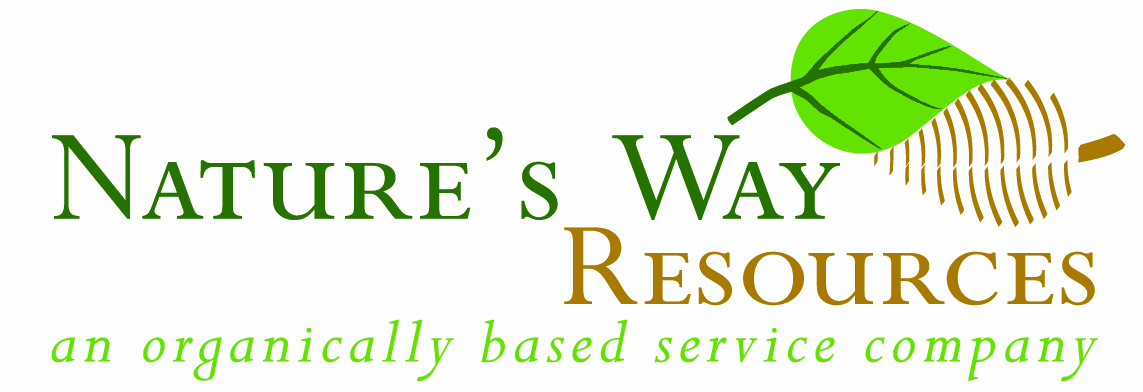
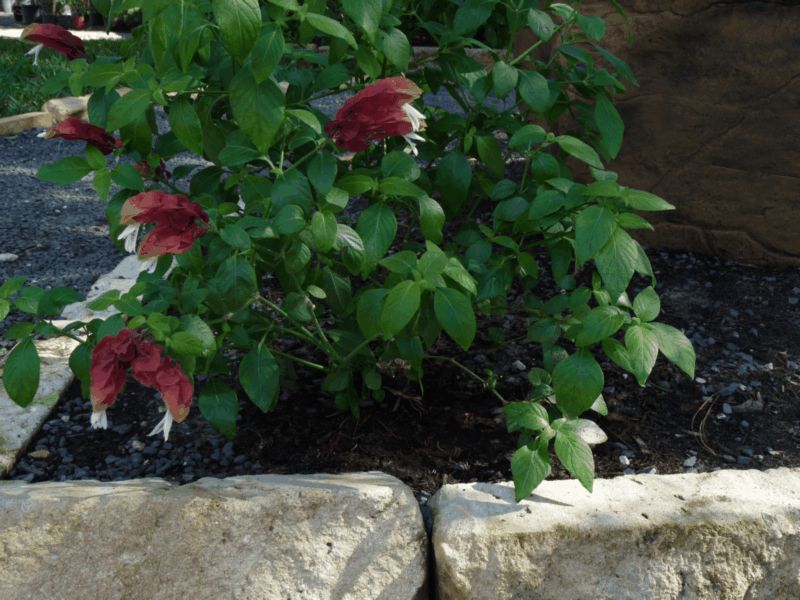
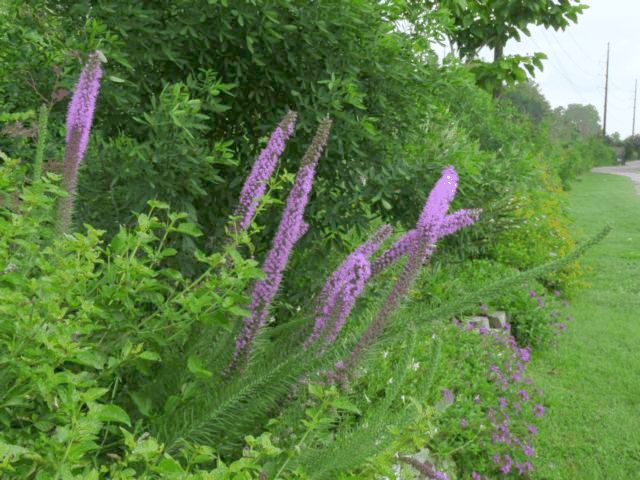
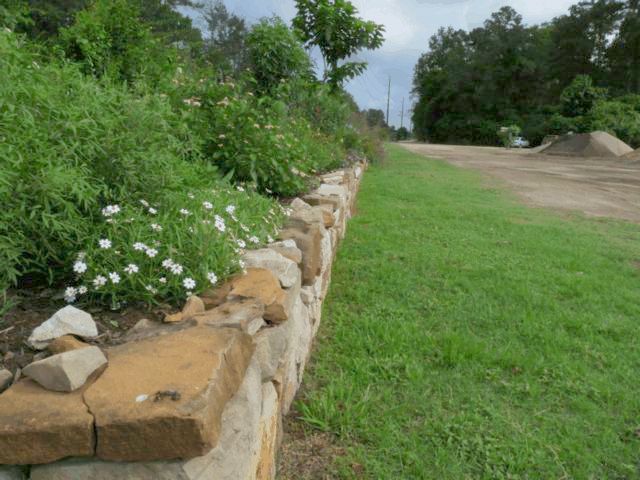
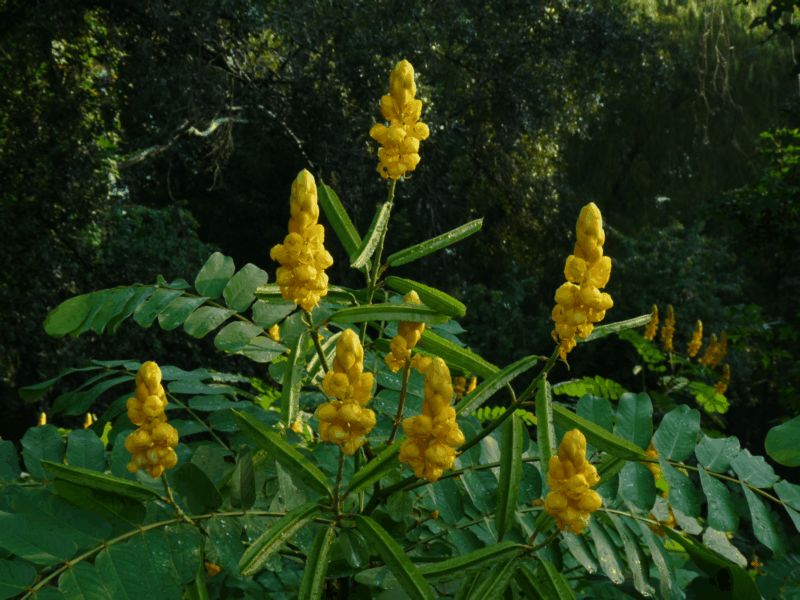
THE DIRT ON SOILS!
Soil is the outermost layer of our planet that all life depends upon. Five tons of topsoil spread over an acre is as thin as a dime. It takes natural processes at least 500 years to form 1 inch of topsoil. Over 70,000 types of soils have been identified in the United States. Five to ten tons of animal life can live in an acre of healthy soil.
- Healthy Garden loam (Topsoil) is composed of sand, silt, clay, humus (at least 5%), macro-nutrients, trace minerals, micro-nutrients, and microorganisms.
- Organic matter (i.e. compost) in the top 6
inches of the soil provides:
- growth-promoting hormones
- toxins and antibiotics
- mycorrhizae fungi
- nematode destroying fungi
- unlocks minerals
- nitrogen fixing microorganisms
- increase moisture holding capacity
- sticky substances that bind particles into aggregates
- increases air space, drainage and aeration
- acts as a buffer against chemicals and high/low soil pH
- releases nutrients over a long period of time
- maintains the soil base exchange capacity
- gives soil good tilth--easy to work and till, wet or dry
- helps recycle waste products and prevents erosion
- Compost is an excellent soil amendment that
also acts as a slow release fertilizer containing
nitrogen, phosphorus, potassium, trace minerals,
microelements, humic acids, fulmic acids, and
other needed nutrients (vitamins, enzymes,
microorganisms, etc.).
- Healthy soils contains the following
microorganisms: bacteria, fungi, actinomycetes,
algae, protozoa, yeasts, nematodes, germs, and
other tiny critters. Over 13,000 different
organisms have been identified that live in the
soil.
- Microorganisms feed on organic matter in the
soil and form glue like material called
polysaccharides. These complex sugars are what
binds or welds individual soil particles together
creating larger aggregates. This process gives
soil its wonderful soft crumbly texture and helps
prevent erosion.
- "A healthy soil has a constantly
changing, but always active population of
microbes. There are approximately 900,000,000
(nine hundred billion) of these lifeforms in
every one pound of soil." H. Garrett,
Harmony With The Environment, Acres USA, June
1993
- Humus is the dark brown to black substance
that is the secret key to healthy soil. It is
nearly insoluble and contains about 30% each of
lignin, protein, and complex sugars. It contains
3-5% Nitrogen and 55-60% Carbon. Humus is the
source of food and energy for microorganisms
development and is the stage of decomposition
that provides food from the soil to plants in the
form of slow release nitrogen, phosphorus and
sulphur.
- Mulch is the best way to add organic material
to your soil. Compost is the best mulch for this
purpose.
- There are 930 billion microorganisms in each
one pound of soil under turf. There are about 70
pounds of them living and working in each 1,000
square feet of root zone. Many of these organisms
are very short-lived, so the turnover is rapid.
One Hundred pounds of dead microorganisms will
contain close to ten pounds of nitrogen, five
pounds of phosphate, 2 pounds of potassium, one
half pound of calcium oxide, one half pound of
magnesium oxide, and one third pound of sulfate.
With 70 pounds of these creatures per 1000 square
feet of root zone, the poundage adds up to enough
per acre for excellent crop production. Elliot C.
Roberts, The Lawn Institute.
- Synthetic chemical fertilizers destroy soils.
As soils are being destroyed, plants become
weaker and actually attract insects, diseases and
weeds. When we spray fungicides, insecticides and
herbicides we accelerate the destruction of the
soil. Humus (organic matter) is literally burned
out of the soil reducing (if not eliminating) the
microorganisms that take nitrogen from the air
and make it available for plants. This requires
larger amounts of nitrogen based chemical
fertilizer to get plants (crops) to grow and the
cycle continues. Additionally, soil structure is
destroyed greatly increasing erosion and the
leachates in the runoff pollutes streams, ponds,
groundwater, etc.
- Organic matter also stores mineral nutrients
such as calcium, magnesium, potassium and many
others. It keeps these valuable nutrients from
washing out of the soil, and makes them more
available to the plant (Medina Magazine).
- According to Dr. E. Ingham, Soil Biologist,
Oregon State University, a teaspoon of healthy
soil is teeming with:
- 100 million or so individual bacteria
- 50 to 150 meters of fungal threads
- 10,000 to 100,000 protozoa
- 5 to 500 beneficial nematodes. - Thiamin (vitamin B1, aneurin) is a naturally occurring compound present in soils, water, plant and animal tissue, which is required for microbial and plant growth. Thiamin is known to affect both root and plant growth. A reduction of organic matter in soils reduces the CEC ratio which leads to reduced Fe (iron) and Al (aluminum) availability on the surface of clay particles which may cause a reduction in thiamin absorption. Organic matter also helps bind thiamin with increasing pH. The absorption of thiamin is closely related to the stoichiometric exchange of the Ca++ (calcium ion) which suggest that absorption of Thiamin occurs by an exchange mechanism. Soil Science Society of America Journal, Nov./Dec. 1994, p.1829.
- A healthy soil will have an abundant earthworm population which is busily at work increasing the soils fertility.
- Soil pH is constantly changing. Large changes can occur naturally with 48 hours. Soil compaction can raise the pH level even moisture can change the pH.
- A recent study found that soil compaction reduces crop yields and plants grown in compacted soils had greatly increased insect damage. Journal of the American Society for Horticultural Science, 120(6):956-963. 1995.
- Soils with lots of organic matter hold minerals better. A recent study of agricultural soils found that total soil sulfur decreased in all treatments where no organic material was added. However, of the organic amendments 26-54% of the sulfur remained in the soil with a half-life of 24-38 years. Soil Science Society of America Journal, p.174-178, Vol. 60 #1, January-February 1996.
- Synthetic soils (generally light weight potting or bedding media) are often soil-less, this means they looses water very quickly, they do not retain nutrients, do not support beneficial microbes or other beneficial organisms such as earthworms. Hence a lot of disease and insect problems are the result.
- In Texas it is estimated that we lose up to
4,000 pounds of humus per acre each year due to
natural soil breakdown in high temperatures. Neil
Sperry's Gardens, Nov.-Dec. 1996.
Note 1: Along the Gulf Coast with higher moisture levels, humus lose is even greater.
Note 2: Freshly organic matter contains 1-2% humus or less. It is the action of microbes and earthworms that convert organic matter into humus. Depending on the form of organic matter, it could take 400 cubic yards per acre each year to replace what is lost. - One of the biggest problems we have with our soils is the loss of trace and micro nutrients (i.e. minerals). The growth and health of plants is limited by the least available nutrient. As plants grow the minerals are used up to form plant tissue from stalks and leaves to the fruits and vegetables we eat. If the minerals needed for good health are not in the soil then they are not in our food (plant or animal) and our health suffers. To restore soil health we must add back mineral dusts (lava, granite, basalt, etc.) to the soil. The microbes will release the minerals for plants to use.
- Research has recently identified a physical property associated with good soil, the Paramagnetic force as it is often incorrectly called. After studying soils from around the world he has found that the healthiest soils with best plant growth and highest crop yields have high paramagnetic values while poor soils have low values. How these low level energy fields affect plant growth is not fully understood but the direct correlation with plant growth is confirmed. Volcanic rocks (lave, granite, basalts, etc.) generally have high paramagnetic values hence mineral dusts form these rocks have an additional value. Paramagnetism - Rediscovering Nature's Secret Force of Growth, by Philip Callahan, Ph.D., 1995.
- Research from Europe has found than bacteria that lives in the guts of grazing animals like cows and horses produce the vitamin B12 and extra B12 is excreted in the manure. When manure is used as fertilizer at a rate of 10 grams per 1,000 grams of soil the plants grown in manure fertilized soil had 2-3 times the B12 as plain soil plants. Plants have the ability to absorb whole vitamins directly from the soil. Plant and Soil Journal.
- When Penn State University tested over 50 samples of alleged sterile potting mix in sealed plastic bags they found all the bags had disease spores. A sterile mix is a biological vacuum waiting to be filled.
- Researchers at the USDA's Soil Microbial Systems Lab have discovered a new protein named glomalin, which is produced by fungi that helps glue soil particles together making it easier for air and water to move through the soil. The improved circulation also creates a healthier environment for plants and beneficial microorganisms. Tests have shown that no-tilled corn plots were more stable and contained more glomalin than tilled plots. Soils with the well stabilized structure were far less prone to erosion from wind or water. BioCycle, December 1997.
- USDA scientists have found a fungal protein (glomalin from the Glomales fungi), that binds soil particles together. They also found that there is less of this protein in tilled soils than untilled soils. Studies of various soils have shown that glomalin glues soil particles together into beneficial aggregates with some soils having up to 2% by weight of this protein. These fungi are found around the world growing on root hairs of plants. The American Gardener, March/April 1998.
DEFINITIONS:
Clays: + smallest of soil particles, high
nutrient and water retention capability, helps
bond larger soil particles together
- high % of clay can make soil difficult to
work, shrink and swell with water content,
slippery when wet, hard when dry, poor
aeration.
Silts: + between clay and sand in size
and properties, important in loam soils
- not important by themselves
Sands: + coarsest
of all soil particles, well aerated, drains
rapidly, ideal for root growth
- moisture and nutrient retention are
poor.
Loams: (1) soil that contains equal amounts
of clays, silt, and sand, plus some organic
matter, the ideal garden soil
(2) Example a 40 % sand, 40% silt, and 20% clay
is considered a loamSandy loam: 10% clay, 65%
sand, 25% silt
Silt loam: 60% silt, 20% clay, 20% sand
Clay soil: any soil over 55% clay
Coarse sand: often called sharp sand or builders sand.
Small gravel: often called bird gravel or pea gravel.
SIMPLE SOIL TESTS
1: Take a sample of soil 8-12 inches deep and place into a jar 75% full of water, and shake vigorously for 10-15 minutes and all soil chunks are dissolved. Let jar set for several days (until water clear) and you will see different layers of gravel then sand silt and clay. The thickness of each layer related to total thickness gives the amount of each.
2: Get a handful of soil and wet it a little with water. Squeeze your hand into a fist and then release. All but the most sandy soil will form a ball or clump with distinct finger marks, if you can make a rope with the ball then a good mix of sand silt and clay, if you can flatten the rope into a ribbon without breaking it has a high clay content
3: Rub a small amount of soil
between thumb and forefinger:
- If it feels gritty then the soil is
sandy.
- If it feels like moist flour or talcum powder
the its silty.
- if it feels slippery and moldable or sticky
then it contains a lot of clay.
4: Sieve analysis (by weight or volume), take a soil sample and dry in a oven at low heat, or in the sun, then pass through sieves and measure the amount of soil in each size category.
USEFUL REFERENCES:
A non-technical overview of soils:Start With The Soil, Grace Gershuny, Rodale Press, Emmaus, Pennsylvania, Copyright 1993, ISBN 0-87596-567-9.
The Dirt Doctor's Guide to Organic Gardening, J. Howard Garrett,, University of Texas Press, Copyright 1995, 0-292-72780-1.
The Rodale Book Of COMPOSTING, Deborah L. Martin and Grace Gershuny, Editors Rodale Press, Emmaus, Pennsylvania, Copyright 1992, ISBN 0-87857-990-7.
A semi-technical overview of soils:
An Acres U.S.A. Primer, by Walters and Fenzau, published by Acres U.S.A., Copyright 1992, ISBN: 0-911311-37-8A technical introduction to soils:
Introduction To Soil Physics, by Daniel Hillel, published by Academic Press, Inc., Copyright 1982, ISBN: 0-12-348520-7
Paramagnetism - Rediscovering Nature's Secret Force of Growth, by Philip Callahan, Ph.D., published by Acres U.S.A. Press, Copyright 1995, ISBN: 0-911311-49-1
ORGANIC Soil Conditioning, William R. Jackson, PhD, Copyright 1993, Jackson Research Center, ISBN 0-9635741-0-8
Soil Testing Laboratories:
Texas Plant and Soil Lab (from Acres, USA)
Route 7, Box 213Y
Edinburg, TX 78539
Peaceful Valley Farm Supply (from Organic Gardening Magazine)
P.O. Box 2209
Grass Valley, CA 95945 (916) 272-4769
Timberleaf (from The Dirt Doctor's Guide To Organic Gardening)
5569 State Street
Albany, OH 45710
Tiberleaf Soil Testing Services (from Organic Gardening Magazine)
26489 Ynez Rd., Suite C-197
Temecula, CA 92591 (909) 677-7510
Wallace Laboratories (from Organic Gardening Magazine)
365 Coral Circle
El Segundo, CA 90245 (310) 615-0116
Extension Soil, Water, and Forage Testing Laboratory
Texas A&M University- Soil and Crop Sciences
College Station, Texas 77843-2474 (409) 845-4816
Stephen F. Austin Soil Lab. (409) 468-4500
Terry Bell - manager, or Gene Bickerstaff
Soil and Plant Laboratory (from Composting Council)
352 Mathew Street
Santa Clara, CA 95050 (408) 727-5125 (James West)
Soil Control Lab (from Composting Council)
42 Hanger Way
Watsonville, CA 95076 (408) 724-5422 (Frank Shields)